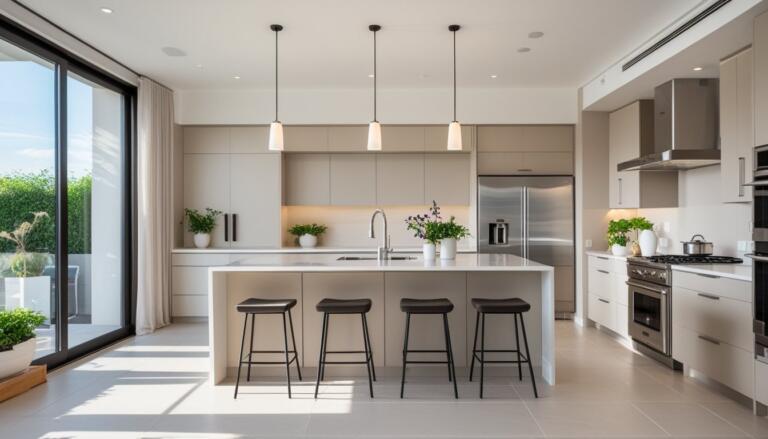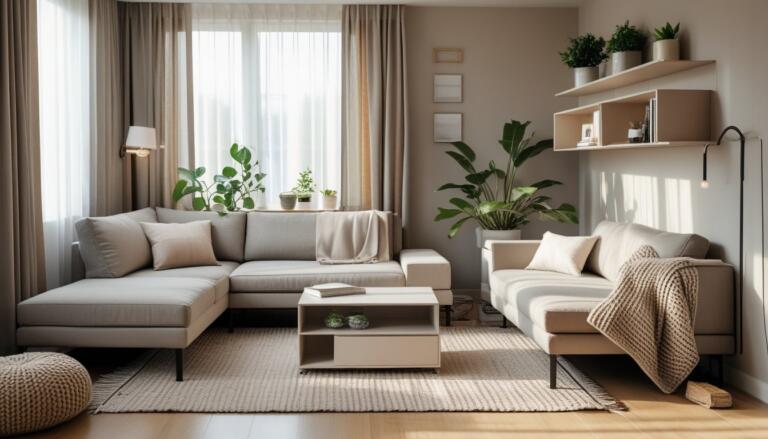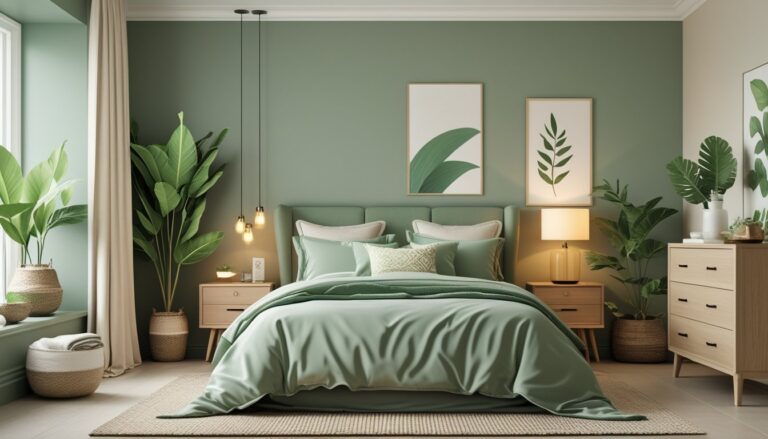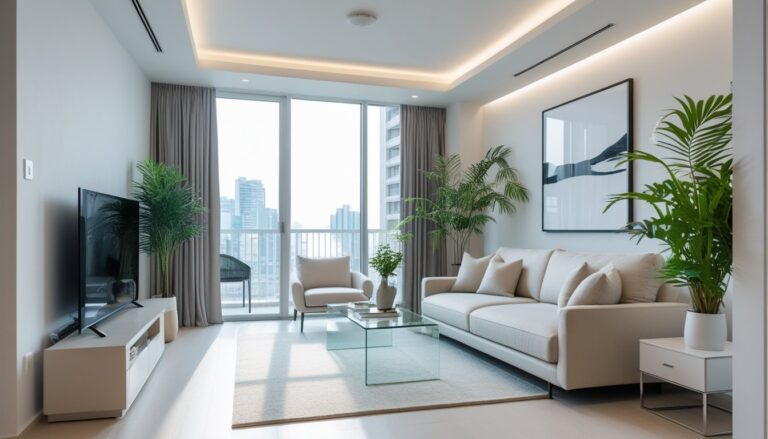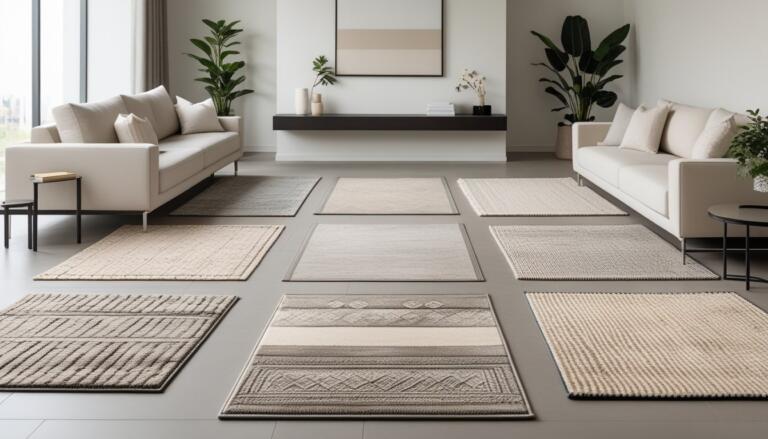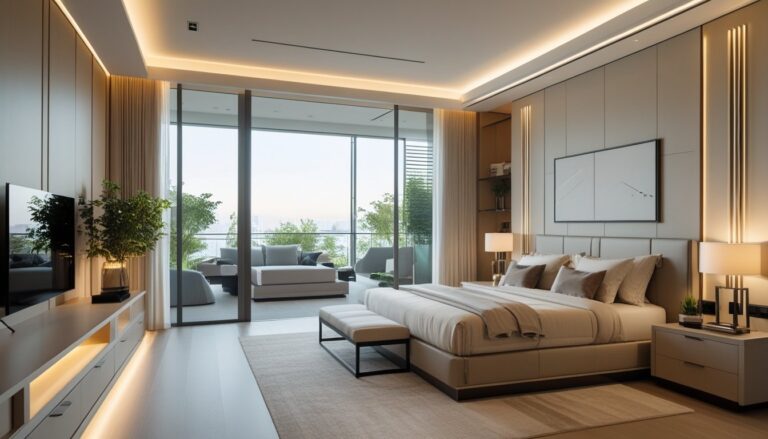8 Small Bedroom Ideas for Maximizing Space and Style
Small bedrooms often present challenges when it comes to creating a comfortable and functional space. Many people struggle to make the most of limited square footage without sacrificing style or comfort. Finding smart ideas can help transform a small bedroom into an efficient and inviting room.
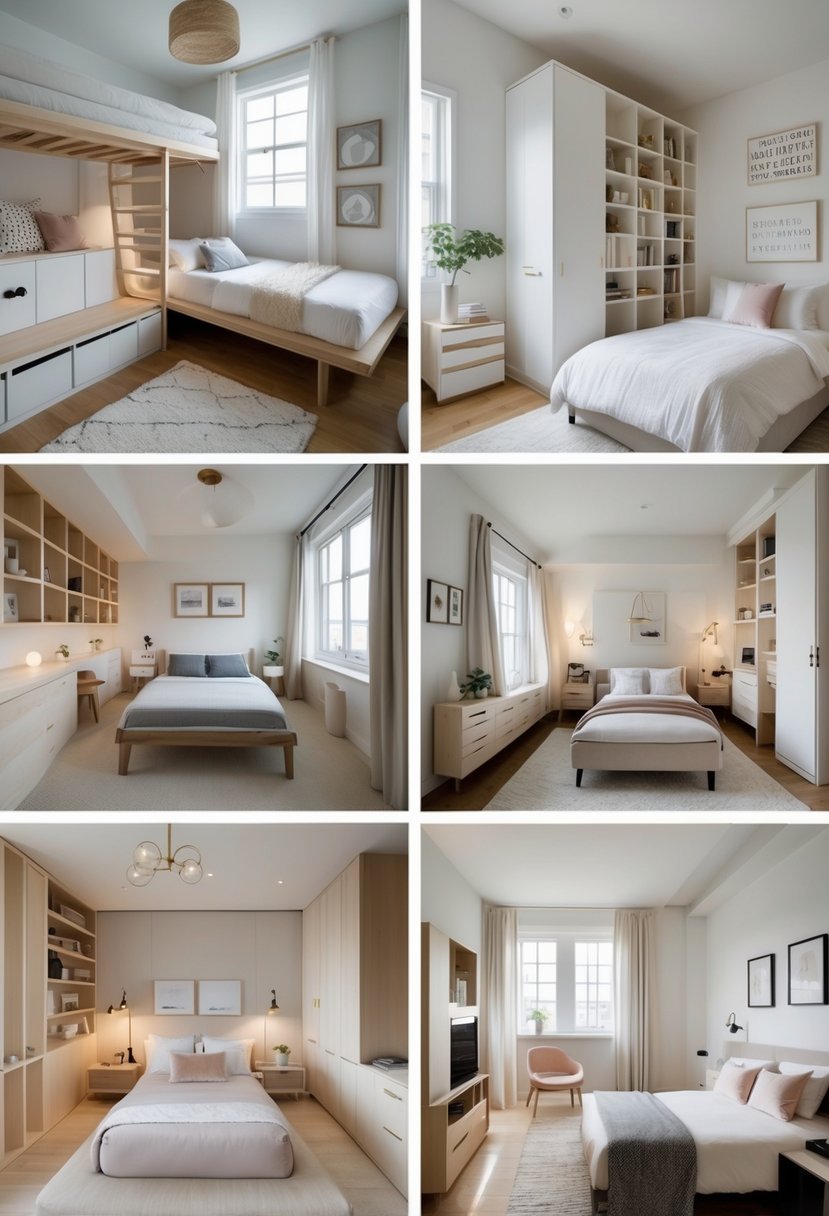
By using simple design tricks and thoughtful layouts, even the smallest bedrooms can feel open and cozy. This article shares practical ideas that improve space and enhance the room’s overall look.
1) Use multifunctional furniture like beds with built-in storage drawers
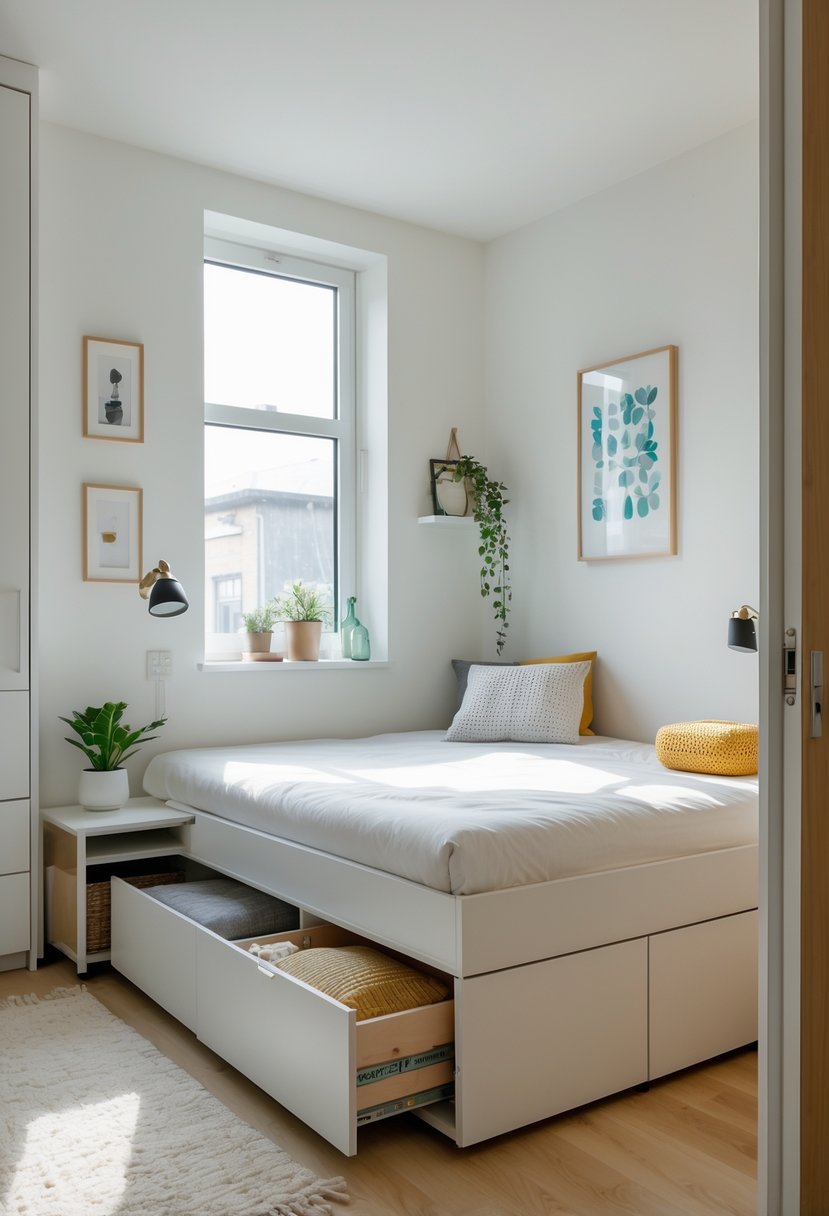
Multifunctional furniture helps save space in a small bedroom. Beds with built-in storage drawers provide extra room for clothes, linens, or other items without needing extra furniture.
This type of bed keeps things organized and reduces clutter. It uses the space under the bed efficiently, which is often wasted.
By choosing furniture that serves more than one purpose, the bedroom feels larger and more open. This approach suits small spaces well.
2) Opt for light, neutral paint colors to make the room feel larger
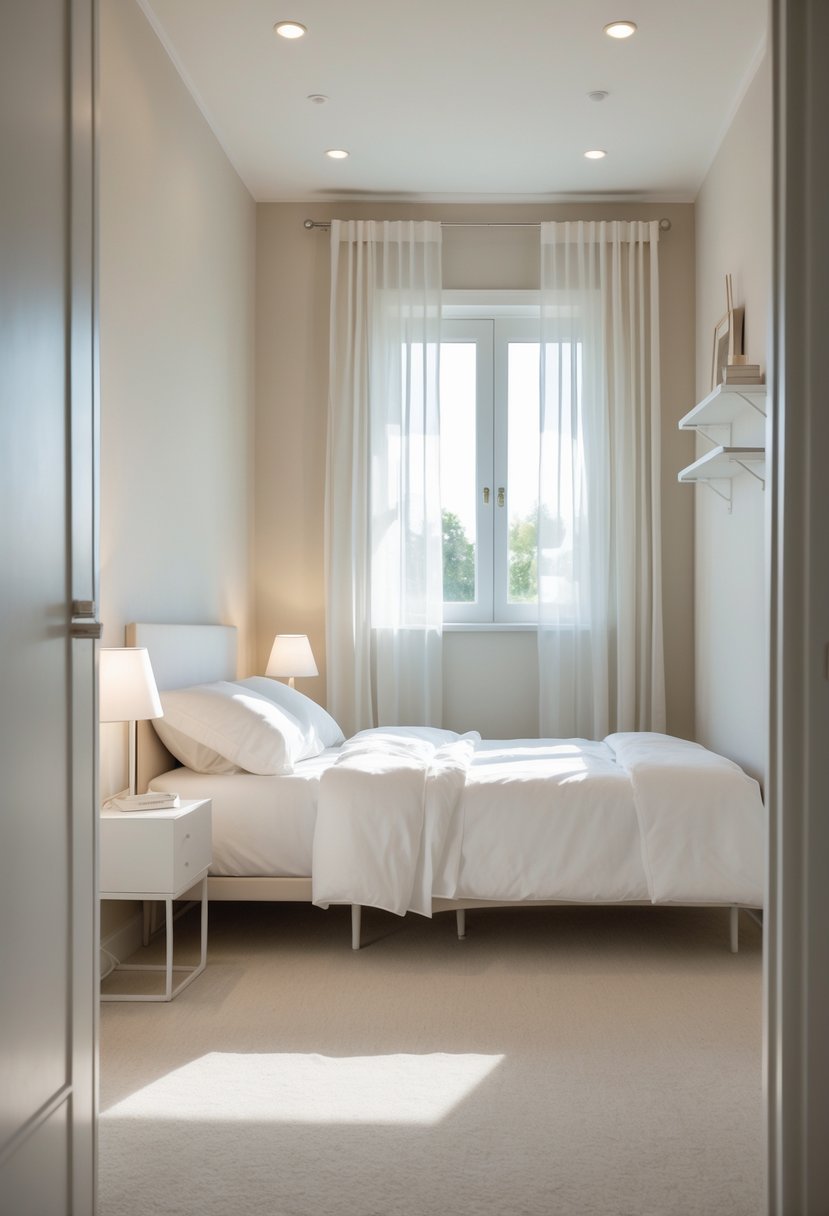
Light, neutral colors help reflect natural and artificial light. This makes the walls seem farther away, giving the room a more open feel.
Shades like white, beige, soft gray, and pale pastels work well. They create a calm and inviting atmosphere without overwhelming the space.
Darker colors can make a small bedroom feel cramped. Using light neutrals helps prevent that and can make the room appear brighter and more spacious.
3) Incorporate vertical shelving to maximize wall space
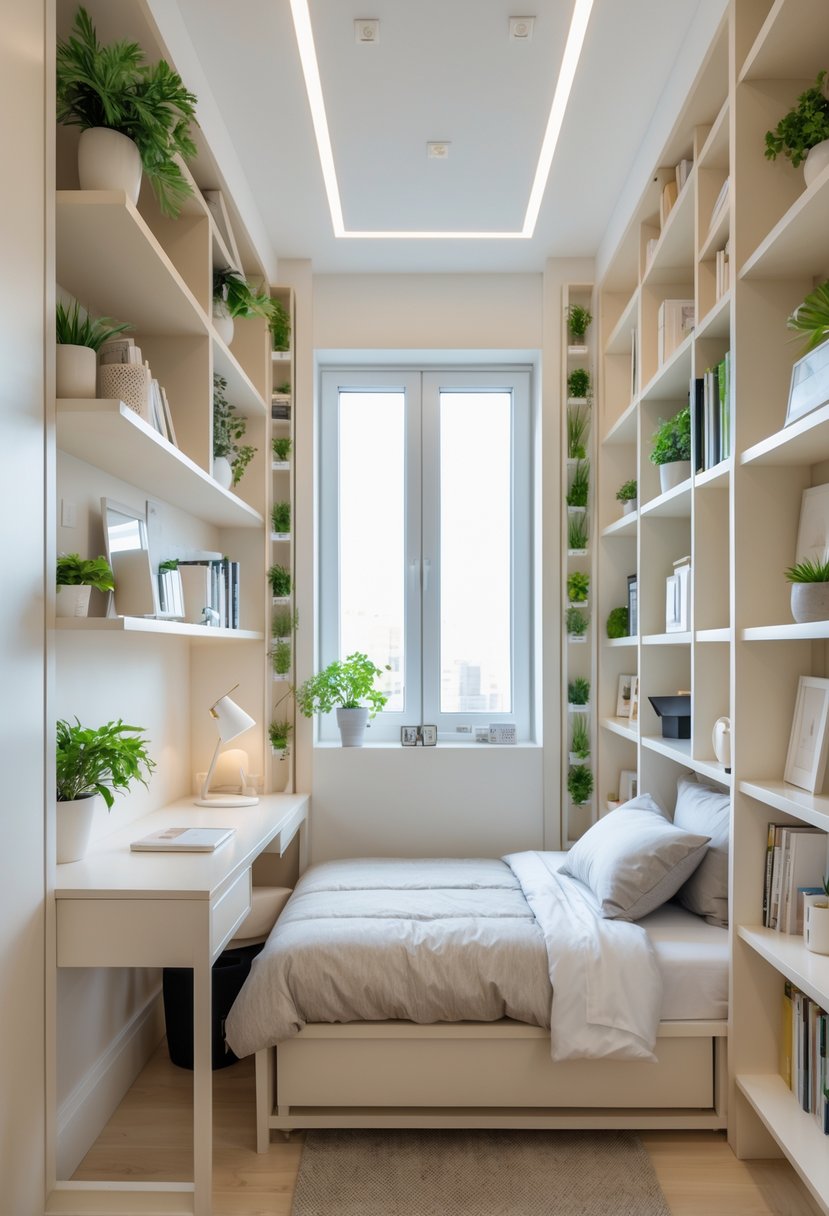
Vertical shelving helps use wall space without taking up floor area. It lets people store books, decor, or essentials neatly and within reach.
Wall-mounted shelves keep the room open and less cluttered. Choosing simple designs can match any style and keep the space feeling light.
Using vertical shelves can also free up space for other furniture or activities, making the small bedroom more functional.
4) Choose foldable or wall-mounted desks for home office setups
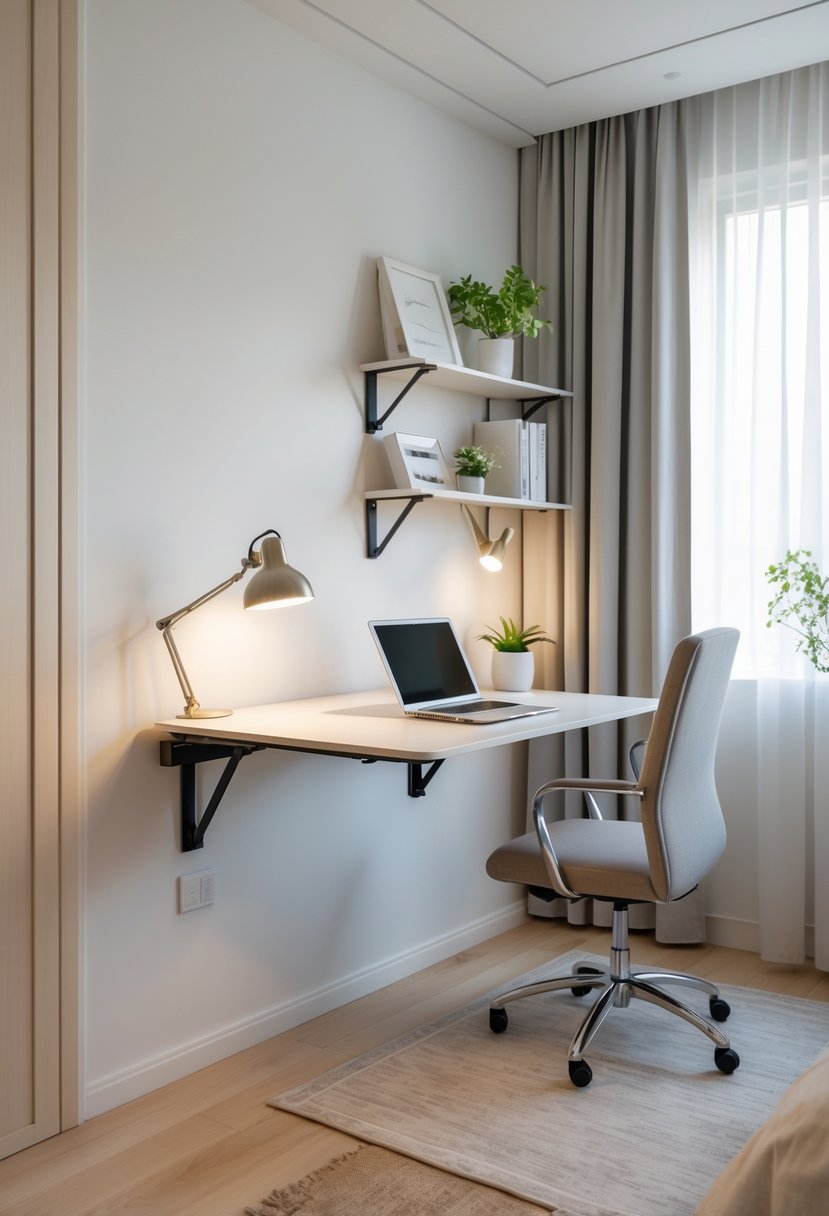
Foldable and wall-mounted desks save space in small bedrooms. They can be folded up or pushed against the wall when not in use, freeing up floor area.
These desks provide a practical workspace without making the room feel crowded. They also often include storage options to keep supplies organized.
Choosing a desk like this helps create a functional home office setup even in tight spaces. It allows for flexibility and keeps the room tidy.
5) Use mirrors strategically to create a sense of depth
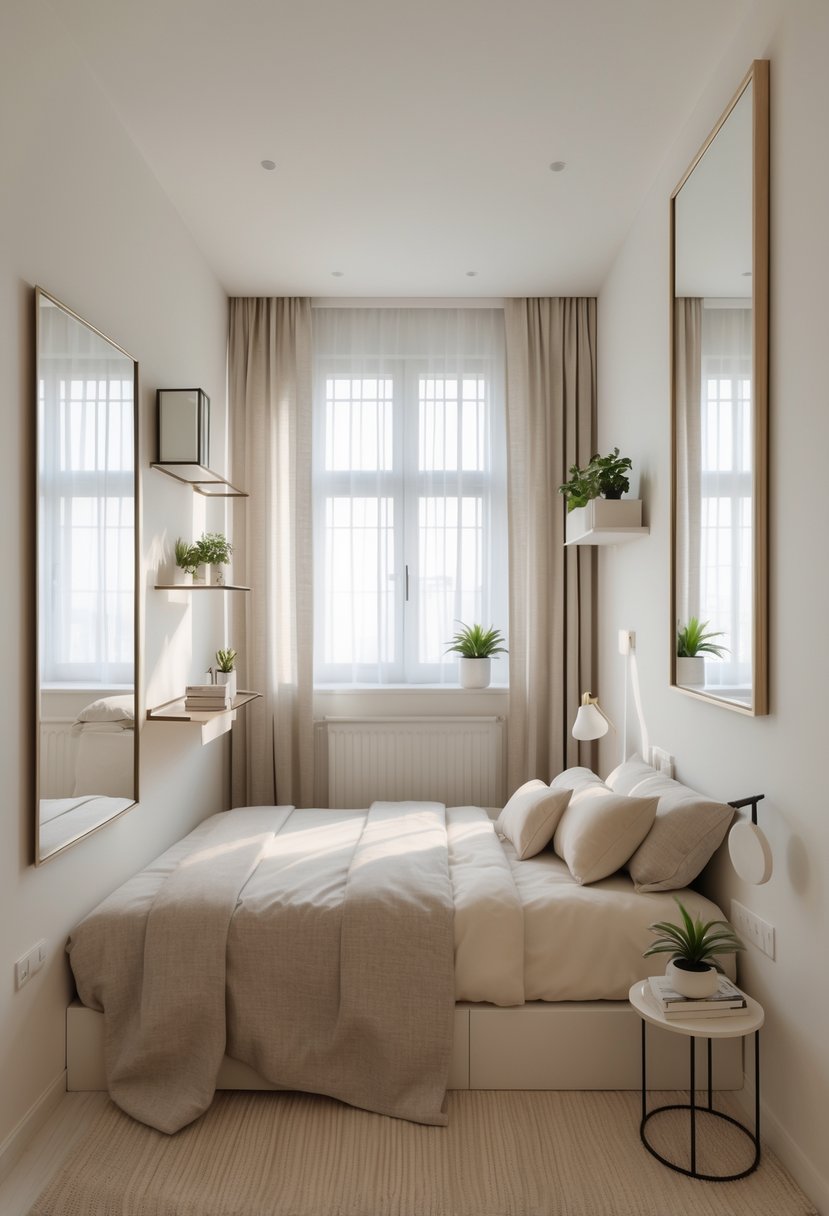
Mirrors can make a small bedroom feel larger by reflecting light and space. Placing a large mirror opposite a window helps bounce natural light around the room.
They also add depth by showing more of the room than actually exists. Grouping mirrors of different shapes or sizes can increase this visual effect.
Using mirrors wisely brings brightness and a more open feel without taking up extra space.
6) Install under-bed storage bins for extra organization
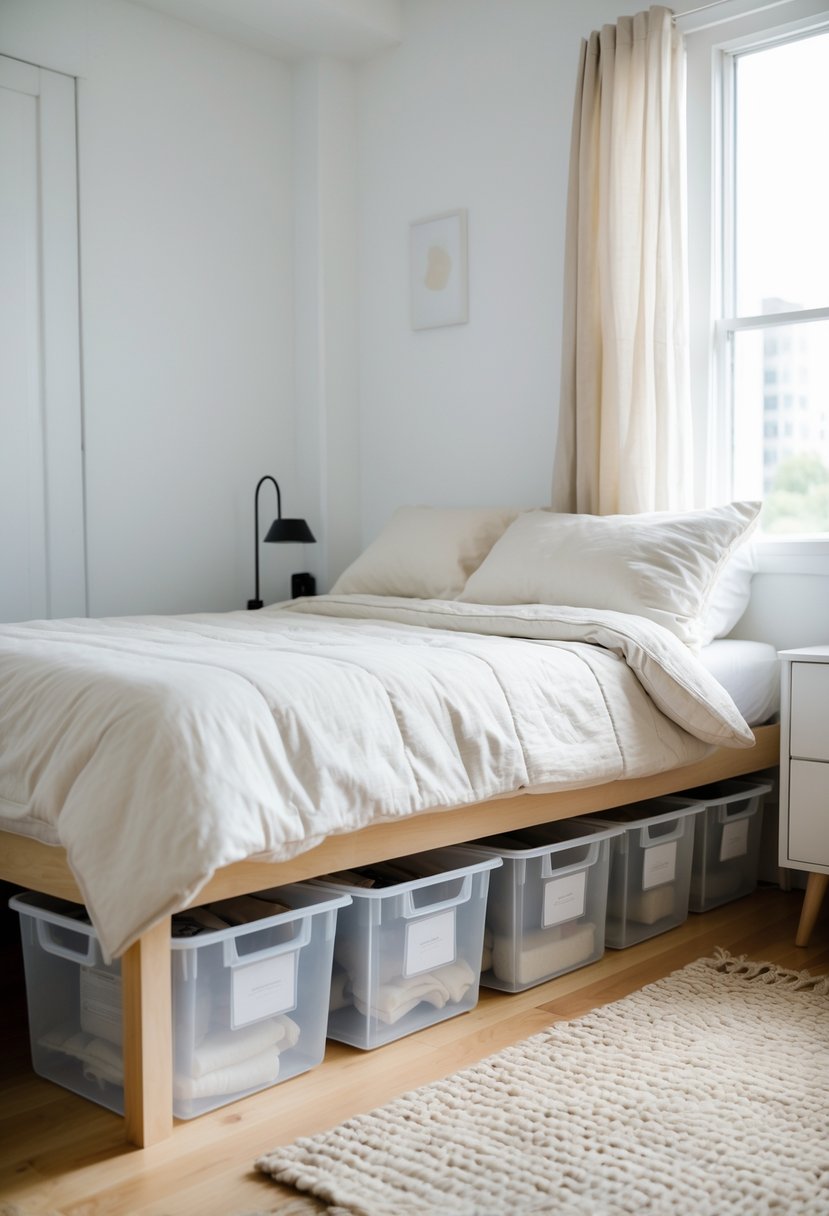
Under-bed storage bins create more space in a small bedroom without taking up extra floor area. They are useful for storing items like shoes, clothes, or extra bedding.
Bins with lids help keep belongings clean and dust-free. Clear containers allow for quick identification of stored items.
Using wheels or handles makes it easier to slide the bins in and out. This keeps the room tidy and organized with minimal effort.
How to Maximize Space in a Small Bedroom
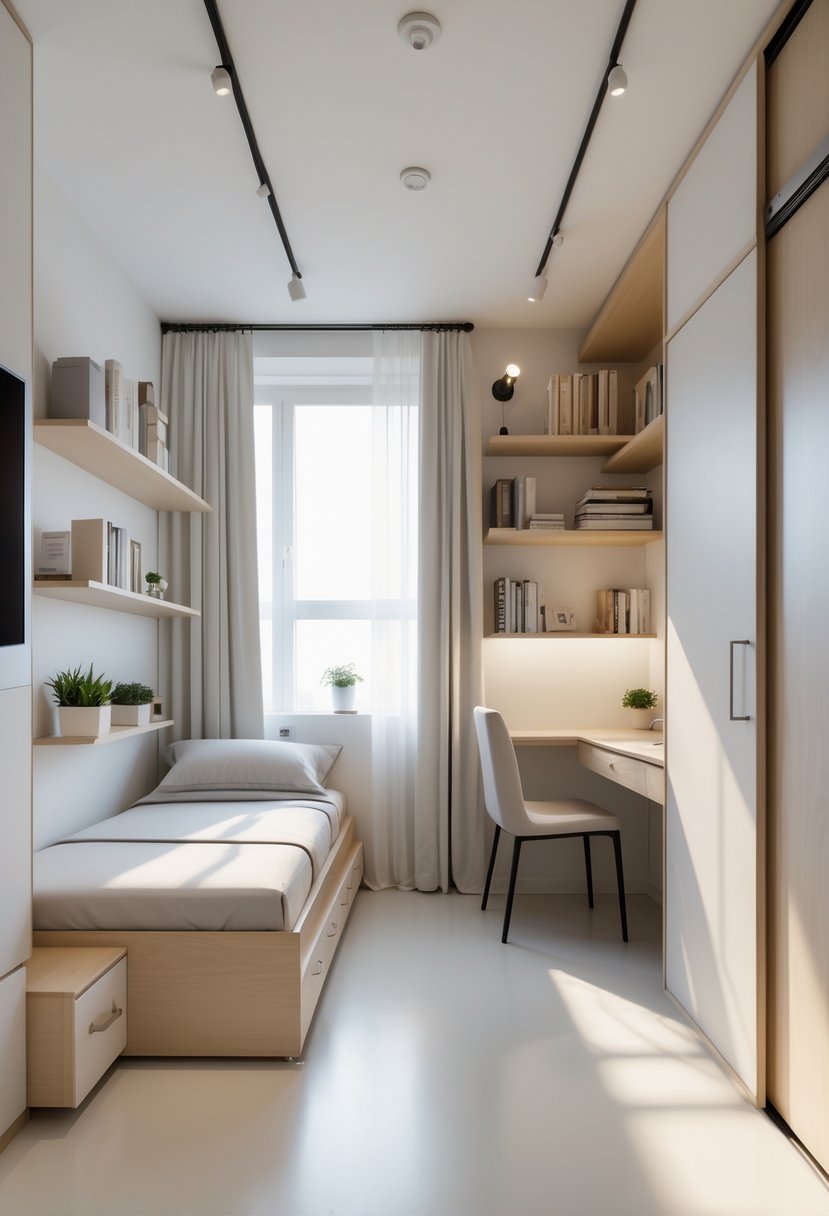
Maximizing space in a small bedroom requires smart storage and furniture choices. Using the room’s height and choosing pieces that serve more than one purpose helps keep the floor clear and the space organized.
Utilizing Vertical Storage
Vertical storage uses wall space to reduce clutter on the floor. Installing shelves or cabinets high on the walls provides room for books, decor, or personal items. Hooks and pegboards help keep accessories off surfaces.
Closet organizers that make use of hanging space and stacked compartments also improve storage efficiency. Tall, narrow storage units fit into corners without taking up much floor space.
Another option is mounting bedside tables or desks on the wall to save room. Vertical storage helps rooms feel less cramped by drawing the eye upward and freeing up walking areas.
Choosing Multipurpose Furniture
Multipurpose furniture combines several functions to save space. Beds with built-in drawers offer storage without extra furniture. Sofas or daybeds can serve as seating and sleeping areas.
Fold-out desks or tables give workspace when needed but fold away easily. Ottoman or benches with hidden storage hold blankets, shoes, or other items.
Choosing smaller, lightweight furniture that can be moved easily makes the room more flexible. Multipurpose pieces reduce clutter by limiting the number of items in a small bedroom.
Optimizing Lighting and Color Schemes
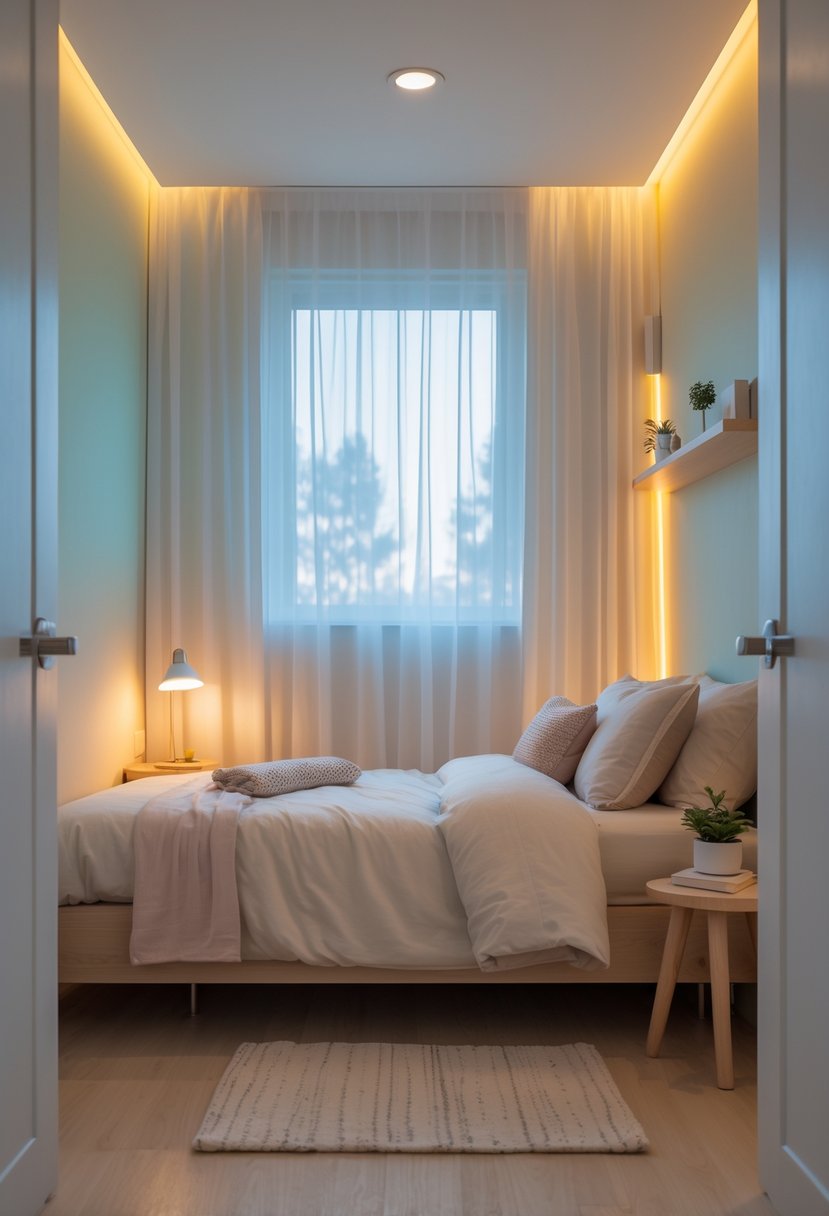
Good lighting and color choices can make a small bedroom feel larger and more comfortable. Using the right light sources and colors helps brighten the space and creates a sense of openness without overcrowding the room.
Best Light Sources for Small Rooms
Using multiple light sources is key for small bedrooms. Wall sconces save floor space and add soft, even light. Pendant lights can brighten corners without using table or floor space. LED strips under shelves or around the bed provide subtle light and highlight areas without harsh shadows.
Natural light should be maximized with sheer curtains or blinds that allow sunlight in while maintaining privacy. Choose bulbs with a warm or neutral tone to create a cozy atmosphere. Avoid heavy overhead lights that can feel overwhelming or create dark spots.
Multi-functional lighting, such as lamps with dimmers or fixtures with adjustable brightness, offers flexibility. This lets the occupant control light levels for different activities, like reading or relaxing.
Impact of Color Choices
Light colors open up small rooms by reflecting more light. Whites, pastels, and pale grays work well to make walls feel spacious and bright. Soft blues and greens add calmness without shrinking the room.
Using one or two accent colors can add personality without clutter. These can appear on pillows, rugs, or artwork. Avoid very dark or intense hues on large surfaces, as these trap light and make the space feel smaller.
Painting ceilings a lighter shade than walls helps draw the eye upward, creating a sense of height. Matte or eggshell finishes reduce glare and soften the light reflection, making the room feel more inviting.
Frequently Asked Questions
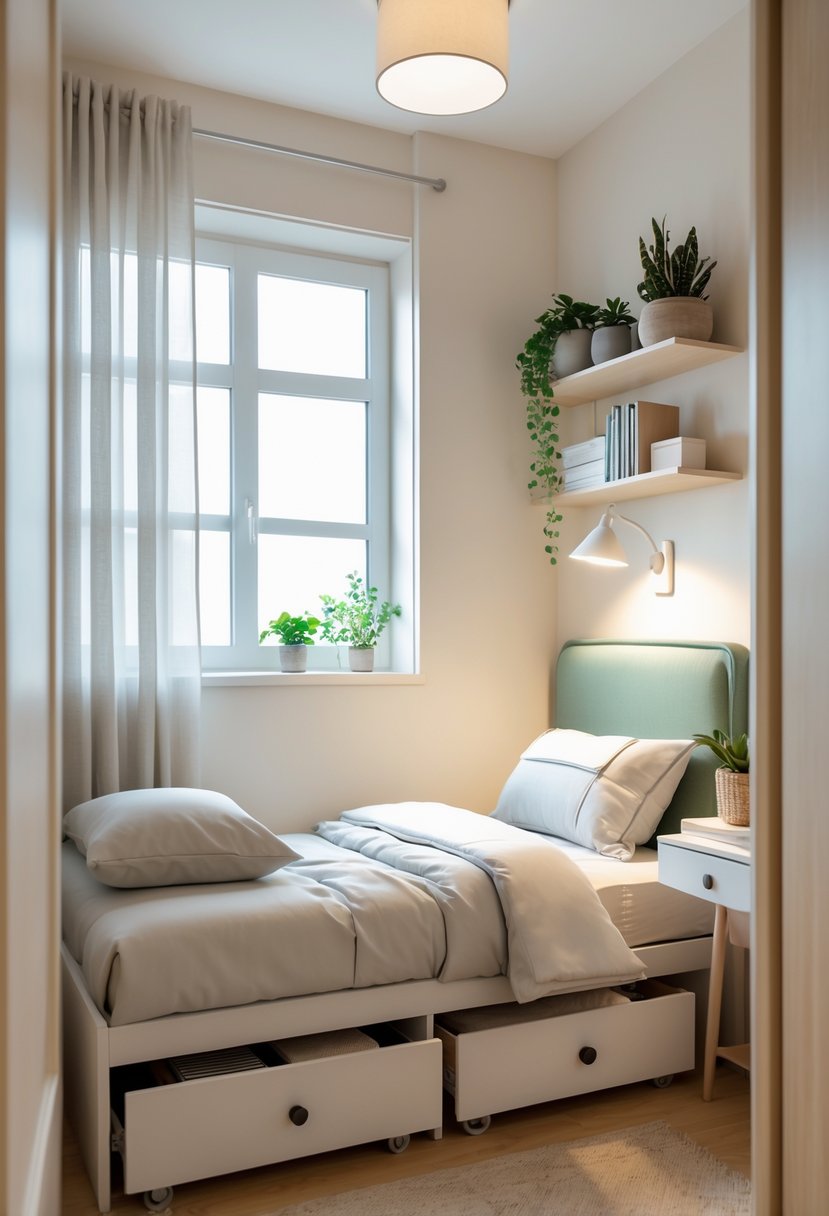
Making the most of a small bedroom requires thoughtful choices in furniture, color, and storage. Paying attention to how space is used vertically and using reflective surfaces can add depth and functionality.
How can I maximize space in a tiny bedroom?
They can use multifunctional furniture, such as beds with built-in storage drawers. Loft beds are a good option to free up floor space underneath for a desk or seating area.
Vertical shelving helps use wall space for storage or display. Foldable or wall-mounted desks allow for a workspace without taking up much floor room.
What color schemes work best for small bedrooms to appear larger?
Light and neutral paint colors are best for small bedrooms. Whites, soft grays, and pastels reflect more light and make the room feel open.
Using one or two simple colors keeps the space from feeling busy or cramped. Coordinating furniture and decor with the color scheme helps create a unified look.
What are the best storage solutions for small bedrooms?
Built-in storage drawers under the bed save space without adding furniture. Vertical shelves and hooks maximize the use of wall space.
Choosing furniture pieces that serve multiple purposes, like ottomans with hidden storage, helps reduce clutter. Clear organization tools make small spaces easier to manage.

